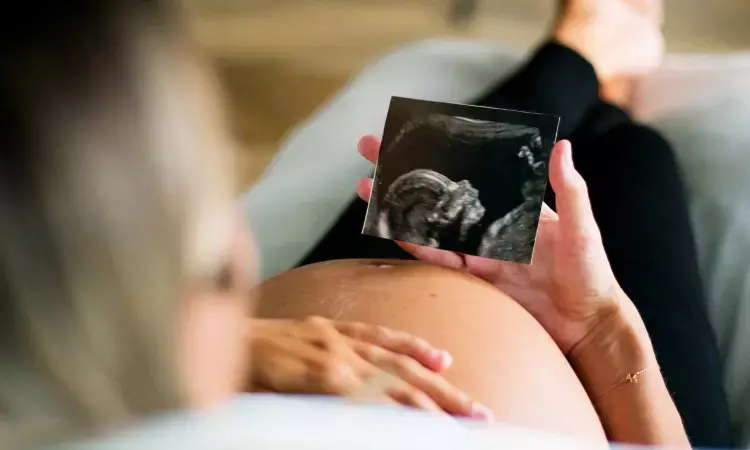- Home
- Medical news & Guidelines
- Anesthesiology
- Cardiology and CTVS
- Critical Care
- Dentistry
- Dermatology
- Diabetes and Endocrinology
- ENT
- Gastroenterology
- Medicine
- Nephrology
- Neurology
- Obstretics-Gynaecology
- Oncology
- Ophthalmology
- Orthopaedics
- Pediatrics-Neonatology
- Psychiatry
- Pulmonology
- Radiology
- Surgery
- Urology
- Laboratory Medicine
- Diet
- Nursing
- Paramedical
- Physiotherapy
- Health news
- Fact Check
- Bone Health Fact Check
- Brain Health Fact Check
- Cancer Related Fact Check
- Child Care Fact Check
- Dental and oral health fact check
- Diabetes and metabolic health fact check
- Diet and Nutrition Fact Check
- Eye and ENT Care Fact Check
- Fitness fact check
- Gut health fact check
- Heart health fact check
- Kidney health fact check
- Medical education fact check
- Men's health fact check
- Respiratory fact check
- Skin and hair care fact check
- Vaccine and Immunization fact check
- Women's health fact check
- AYUSH
- State News
- Andaman and Nicobar Islands
- Andhra Pradesh
- Arunachal Pradesh
- Assam
- Bihar
- Chandigarh
- Chattisgarh
- Dadra and Nagar Haveli
- Daman and Diu
- Delhi
- Goa
- Gujarat
- Haryana
- Himachal Pradesh
- Jammu & Kashmir
- Jharkhand
- Karnataka
- Kerala
- Ladakh
- Lakshadweep
- Madhya Pradesh
- Maharashtra
- Manipur
- Meghalaya
- Mizoram
- Nagaland
- Odisha
- Puducherry
- Punjab
- Rajasthan
- Sikkim
- Tamil Nadu
- Telangana
- Tripura
- Uttar Pradesh
- Uttrakhand
- West Bengal
- Medical Education
- Industry
Cardiac arrest with co-occurring DIC tied to lowest Survival

A new study published in Annals of Internal Medicine suggests that 1 in 9000 hospital deliveries have cardiac arrest, however almost 7 out of 10 of the mothers were able to leave the hospital.
Predictions of cardiac arrest during birth inform the development of evidence-based prevention measures for fatalities associated with pregnancy. The purpose of this study, which was carried out by Nicole Ford and colleagues, was to determine the prevalence of maternal features linked to cardiac arrest during delivery as well as survival.
This retrospective cohort analysis includes data from acute care hospitals in the United States from 2017 to 2019. The major exposure of this investigation were hospitalizations for deliveries among women between the ages of 12 and 55 who were included in the National Inpatient Sample database. The International Classification of Diseases, 10th Edition, Clinical Modification codes were used to identify hospitalizations for delivery, underlying medical problems, cardiac arrest, obstetric outcomes, and severe maternal complications. Based on discharge disposition, survival to hospital discharge was calculated.
The key findings of this study were:
1. The cardiac arrest rate among 10 921 784 hospital deliveries in the United States was 13.4 per 100,000. 68.6% (95% CI, 63.2% to 74.0%) of the 1465 patients who had cardiac arrest lived to be discharged from the hospital.
2. Patients who were non-Hispanic Black, older, had Medicare or Medicaid, or had underlying medical issues experienced cardiac arrest more frequently.
3. The most frequent co-occurring diagnosis was acute respiratory distress syndrome (56.0% [CI, 50.2% to 61.7%]).
4. Mechanical breathing was the most prevalent co-occurring procedure or intervention (53.2% [CI, 47.5% to 59.0%]).
5. For co-occurring disseminated intravascular coagulation (DIC) without or with transfusion, the percentage of survival to hospital discharge after cardiac arrest was lower (50.0% [CI, 35.8% to 64.2%] or 54.3% [CI, 39.2% to 69.5%], respectively).
Reference:
Ford, N. D., DeSisto, C. L., Galang, R. R., Kuklina, E. V., Sperling, L. S., & Ko, J. Y. (2023). Cardiac Arrest During Delivery Hospitalization. In Annals of Internal Medicine. American College of Physicians. https://doi.org/10.7326/m22-2750
Neuroscience Masters graduate
Jacinthlyn Sylvia, a Neuroscience Master's graduate from Chennai has worked extensively in deciphering the neurobiology of cognition and motor control in aging. She also has spread-out exposure to Neurosurgery from her Bachelor’s. She is currently involved in active Neuro-Oncology research. She is an upcoming neuroscientist with a fiery passion for writing. Her news cover at Medical Dialogues feature recent discoveries and updates from the healthcare and biomedical research fields. She can be reached at editorial@medicaldialogues.in
Dr Kamal Kant Kohli-MBBS, DTCD- a chest specialist with more than 30 years of practice and a flair for writing clinical articles, Dr Kamal Kant Kohli joined Medical Dialogues as a Chief Editor of Medical News. Besides writing articles, as an editor, he proofreads and verifies all the medical content published on Medical Dialogues including those coming from journals, studies,medical conferences,guidelines etc. Email: drkohli@medicaldialogues.in. Contact no. 011-43720751


